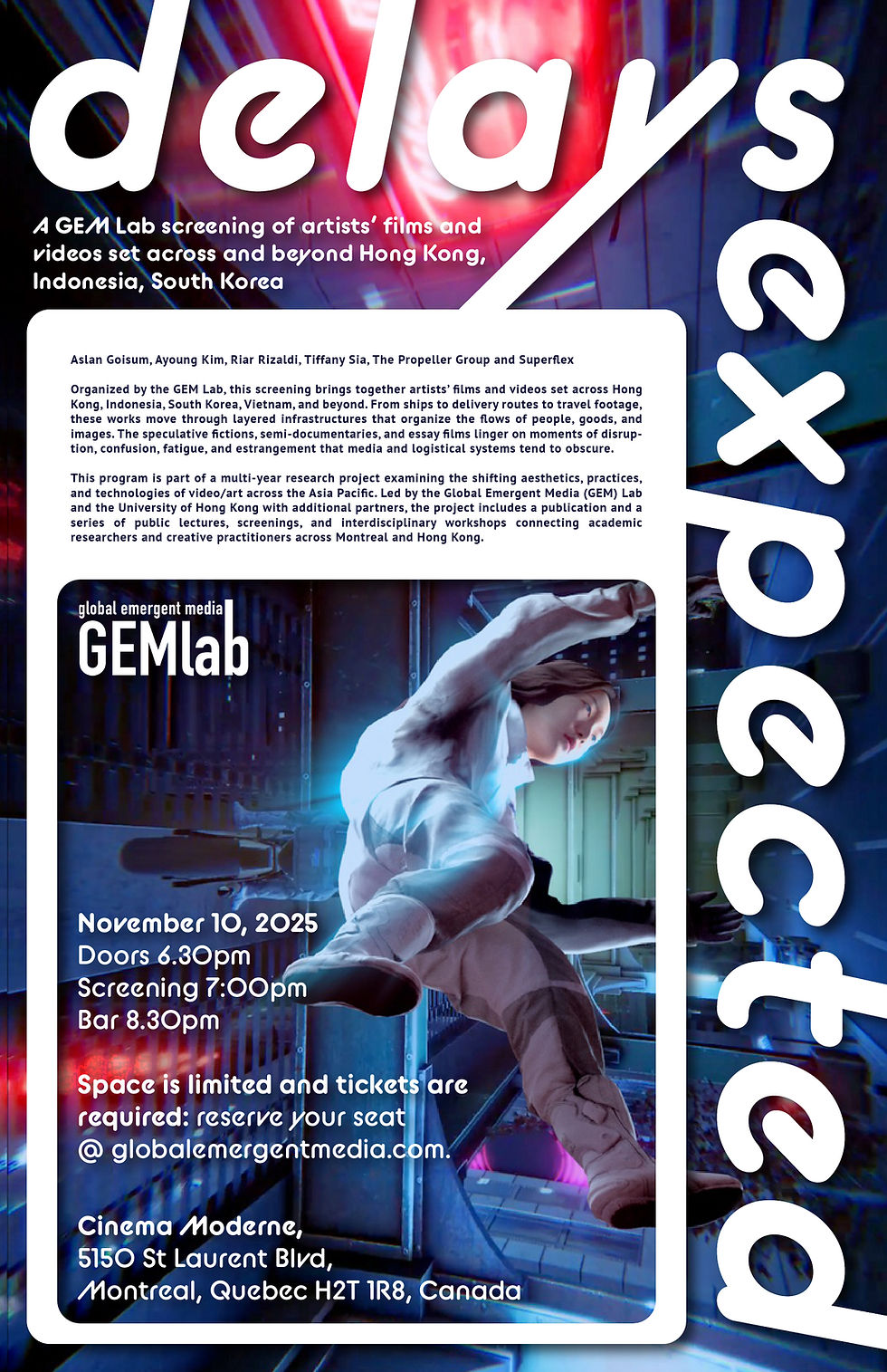The USIA’s “Tales of Hoja Nasreddin” Series with Hadi Gharabaghi
- GEM LAB

- Mar 28, 2022
- 3 min read
The USIA’s “Tales of Hoja Nasreddin” Series presents:
Imperial Governing through Vernacular Modernism in the Middle East as an Early Cold War Animation Diplomacy
A public lecture by Hadi Gharabaghi

//April 8th, 4PM EST
//Global Emergent Media Lab, FB 630.15
//Sign up on Eventbrite to attend virtually
Tales of Mulla, Hoja, or Al Ja'ha Nasreddin (among other names) is widely known and popular in the Persian, Arab, and Turkish speaking region and the Caucuses of West Asia today. Street stories point out to a witty, wise, and sometimes buffoon character that interact with the high and the low cultures of society and often reveals truth through the cloud of conventional commonsense. While a few nations claim his origin, his stories paint a mythical personality. The character also emerged as the title of a political and social weekly in Azeri, Turkish in Tiblisi (Georgia) during the early decade of 20th century coterminous with the rise of Russian revolution in the broader region. There is, however, also a lesser-known collection of Tales of Nasreddin Hoja, a puppet animation series of 24 episodes that the United States National Archives has recently made available online. Shrouded in mystery, the production culture of these series points out to a collaboration between the Encyclopedia of Britannica and the United States Information Services’ regional branches (USIS) of the United States Information Agency (USIA) in Turkey, Iran, and Arab region. The available copies of these animation segments in American-English accent make use of Hoja’s cautionary tales to warn people of hazards of communism that threatens liberal capitalism as a natural course of life. In relation to this collection, the USIA paper-trail also offers evidence of a short-lived and somewhat popular Al Ja’ha children television series that aired on Television Baghdad, a short-lived television station that was established and managed jointly by the United States Operations Mission (USOM) and the USIA in Iraq in the mid 1950s before it was taken over by leftist revolutionaries. Evidently, Al Ja’ha also introduced the character of Amera, Al Ja’ha Nasreddin’s sister.
Building on the recent renewed scholarly interest in the investigation of Nasreddin character and journalism, this talk introduces the puppet series and traces its production culture back to Margaret Mead’s “concept series” in her documentary bible for the Department of State in 1951. In doing so, the presentation unpacks the complex early Cold War imperial governing that operates through governmental and non-governmental entities as well as binational and multi-national production culture and adopts and speaks through the vernacular modernism of the region.
Hadi Gharabaghi holds a PhD in Cinema Studies from New York University. His archival research makes a case for the emergence of documentary diplomacy during the early Cold War US-Iran relations. Hadi's essays have been published in the edited volume Cinema of the Arab World: Contemporary Directions in Theory and Practice (2020), the Journal of Cinema and Media Studies (2021) and the online teaching dossier section of the journal (JCMS, Winter 2022). Currently, Hadi is co-editing Governing Genealogies of Film Education (with Terri Ginsberg, 2022) and has nearly completed co-editing a special issue on the United States Information Agency (USIA) film and paper-trail archival collections for the Journal of e-Media Studies (with Bret Vukoder, 2021). Hadi's forthcoming articles address the emerging Iranian horror cinema for the edited volume Global Horror: Hybridity and Alterity in Transnational Horror Film (2022) and the USIA genealogy of Iraqi television for a co-edited volume in Korean and English (2022).



Comments